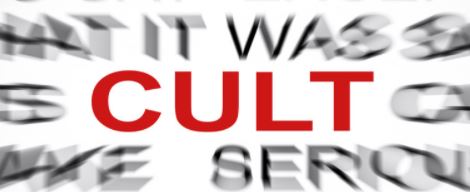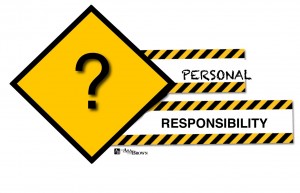The following was posted on the Integral World Forum in response to David Lane’s comments on Brad Reynolds’s essay ‘Defending Adi Da Samraj.”
I am sorry to read about your inability to understand the complexities of the spiritual path. To help, let me first start with a Rumi quote:
“Out beyond ideas of wrongdoing and right-doing, there is a field. I will meet you there….(where) ideas, language, even the phrase ‘each other’ does not make any sense”. – Mevlana Jelaluddin Rumi.
 n reading the essay above and also reading some other materials on Integral World (Reynolds, Benjamin) that discuss Adi Da Samraj’s alleged unethical behaviors that date back to 1974 -during the so-called ‘Garbage and Goddess‘ ‘period – I would like to remind you and your readers that great caution should always the rule when approaching anyone in the role of authority. Especially where personal responsibility and moral conduct are at stake.
n reading the essay above and also reading some other materials on Integral World (Reynolds, Benjamin) that discuss Adi Da Samraj’s alleged unethical behaviors that date back to 1974 -during the so-called ‘Garbage and Goddess‘ ‘period – I would like to remind you and your readers that great caution should always the rule when approaching anyone in the role of authority. Especially where personal responsibility and moral conduct are at stake.
Of course, the issue is how individuals who ‘claim’ enlightenment do hurtful things under the name of truth can? Setting aside the problems of contemporary Western teachers such as Andrew Cohen or Genpo Roshi, why would a great sage such as Upasani Maharaja throw a rock and hit Avatar Meher Baba in the head and cause it to bleed?
If Adi Da, also a confessed Avatar of this age, is enlightened, how could he do what some people experienced and perceived as negative actions while in his company?
If answers or ‘rationalizations’ are given, as you so rightly point out, they are usually from believers or bhakti-infused devotees in the form of it is a ‘teaching demonstration”.
One such example of this is a story about the Great Saint Shirdi Sai Baba from the book ‘Shri Sai Satcharita’:
“They both decided to go to Shirdi. They came from Korallah to Rahata, where Tatya’s Munim brought them to Shirdi. Baba abused and beat him, and he was often afraid of Baba. However, Dixit allayed his fears saying it was a blessing in disguise”.
Suppose anyone were to inquire about the condition of an enlightened being, which is supposed to be about love. How can “whacking” someone around or performing strange sexual behaviors be consistent with bliss, love, and awakening?
How does this ‘square’ with truth and enlightenment? It simply does not square with anything! It does not. Furthermore, it can never be ‘reconciled’ with our notions of enlightenment or what is good, right, and proper. So what are we left with when we hear and read stories of abuse and deception? Aren’t ethics a part of enlightenment?
What is going on here? Are these stories an abuse of power founded on ‘unfinished’ psychological issues of a guru or teacher and then rationalized by them and their followers as a ‘teaching demonstration’? Alternatively, are these behaviors ultimately a paradox in the minds of some, a crucible for others, and a big red flag for most!
None of this behavior, ‘crazy-wise’ or whatever you would like to call it, can ever be ‘rationalized,’ legitimized, or made to conform to conventional ideas of morality.
The intersection is zero. If they fall anywhere on a spectrum of morality, they fall on the side of ‘wrong’ and, depending on their circumstances, potentially ‘abusive’ and maybe criminal.

People should be cautious before entering into a spiritual relationship with a teacher, guru, or anyone given an authoritative position. For example, Jack Kornfield remembered Chogyam Trungpa Rinpoche to have said:
“My advice to you is not to undertake the spiritual path. It is too difficult, too long, and it is too demanding. If you have not already begun, I suggest going to the door, asking for your money back, and going home now.” He said, “This is not a picnic. It will ask everything about you, and you should understand that from the beginning. So it is best not to begin. However,” he said, “it is best to finish if you begin. “
Finally, as Somerset Maugham wrote in his 1944 book, ‘The Razor’s Edge, we are left with a paradox and a razor’s edge.’ “The sharp edge of a razor is difficult to pass over. Thus, the wise say the path to Salvation is hard “.
He took this warning from the Hindu classic Katha Upanishad, written 1,000 years before Christ.
The idea of spiritual abuse is not a new phenomenon. In the Old Testament, God spoke against those who operated in their authority while abusing the very people they were to bless.
In Jeremiah 5:30-31, we read, “An astonishing and horrible thing has been committed in the land: the prophets prophesy falsely, the priests rule by their power, and My people love to have it so. However, what will you do in the end? “

One should be aware of false prophets and priests who abuse their power (see the movie ‘Spotlight’), but it is clear from ALL sources that the spiritual path ITSELF is dangerous.
Why is it dangerous? Why doesn’t it evolve into mindfulness and relaxation exercises that help the ego function better? Why must it also include Milarepa’s ordeal with Marpa?
The spiritual path is dangerous because it is not just about ‘a loving father’ or a ‘radiant’ mother called Mary or Shakti. It is about a stark confrontation with Truth, Reality, and God and the dissolution of whatever keeps us from That. It is fundamentally about dissolving the Grand Illusion that we are somehow separate from That.
It is clear to any mature student of philosophy and spirituality that the path (as opposed to ‘the religious life) is a double-edged sword. This is evidenced in temples and churches that look magnificent from the outside but, once inside, require more than people bargained for. At first, the appearance is inviting and attractive, and then the light turns into a fire.

So, the moral here is CAUTION. For most, it is best to stay in the sandbox.
Dilatants, pundits, and philosophers should follow the rules they learned as children. Live with and be guided by the admonishments of parents, teachers, authorities, and governments. “STAY AWAY FROM CULTS AND GURUS’.
Nevertheless, if you find yourself sensing something more than the clamor of these overseers, then go onward. Step forward into the unknown dark regions described in the ‘Iron John’ story, and go deeper. Be very careful.
Do not lose your discrimination. Be watchful. Comment, warn, and condemn when need be.
However, please, do not ever convey the impression that you have the whole story. Do not act like you know what is going on. The further down the rabbit hole you go, the more things shift, melt, morph, and change.
Suppose you wish to be a spectator, commentator, pundit, or philosopher, then be cautious as you sit on the truth’s ‘right’ side. Have your disclaimer ready when you bear witness. In addition, it would help if you made a disclaimer to your readers: you do not have all the facts.
The truth is you fundamentally don’t know. You are guessing. The best you can do is to imitate a scientist. You can formulate a problem, gather evidence, listen to people, study and consider the data, and then, from an admittedly limited point of view, you can draw a conclusion.
Your disclaimer should read something like:
“This is only my best guess. It does not reflect the whole truth. Any conclusions you draw from my statements are solely your responsibility “.
As a writer and a commentator, you should never forget that your statements and conclusions can have an influence. They might be crucial to the development or the retardation of those who give their faith, trust, and hope to you. So tread lightly, not only for the good of others but also for yourself. Remember that the sword of Manjushri cuts both ways.
Blessings,
Ed
Beezone